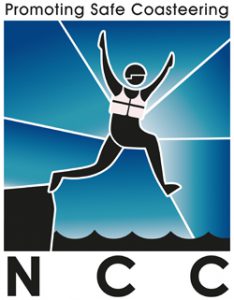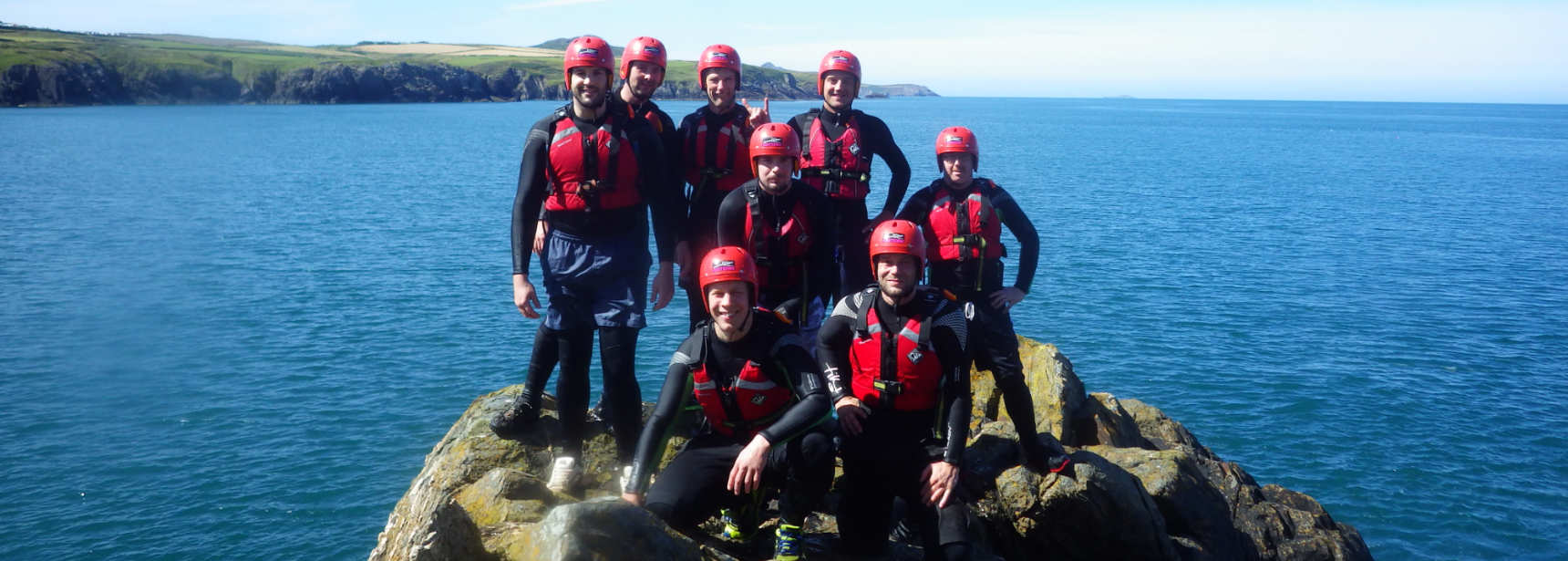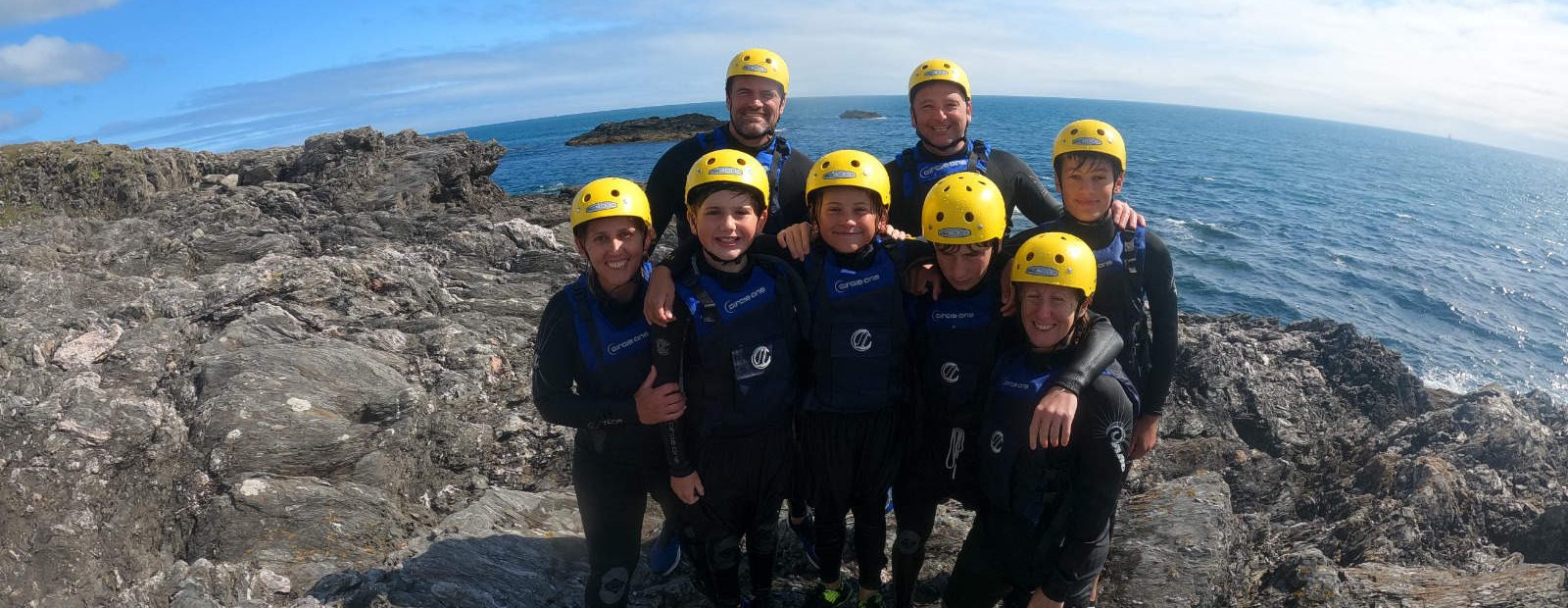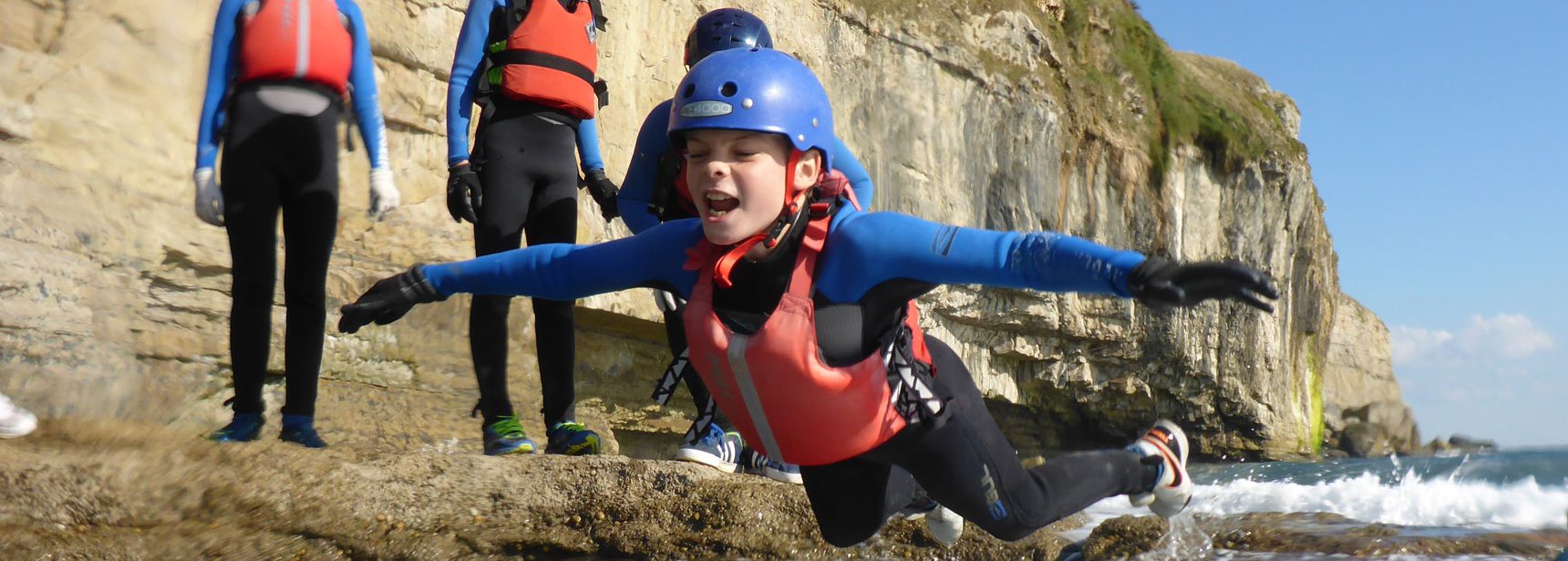All about the NCC…
In 2011, around eighty coasteering providers and interested parties such as the Royal National Lifeboat Institution (RNLI) and the Royal Society for the Prevention of Accidents (ROSPA) came together to form an organisation that would represent and advise the coasteering industry on a national scale. From this meeting, the fledgling National Coasteering Charter (NCC) was born.
Throughout the UK there are more than 400 members of the NCC today. They are made up of a range of companies, organisations and individual members (who are often freelance guides, sole-traders or staff at coasteering businesses). The NCC works regionally and nationally to support coasteering. It is split into regional groups that have representatives who ensure that members in their area are kept up to date with current practice, share information and learning and facilitate annual regional meetings.
The NCC also hosts a symposium every two years that is located in a different region, where members come together for workshops, practical sessions, see practice from other regions and keep abreast of the latest guidance from the NCC. The NCC works to represent its members and the activity of coasteering with the sector. With the growth in popularity of the activity, providers of coasteering now have an organisation that can advise and represent the sector, while promoting safe practice more broadly.
Another key part of the work of the NCC is to support access and conservation. At many coasteering sites around the UK there is a need for providers to engage in access schemes that permit responsible and sustainable coasteering. Through our national voice, the NCC has been able to work closely with key partners and landowners to support regional groups and representative bodies to maintain and provide access for coasteering. The NCC continues to promote environmental responsibility and actively encourages a range of environment-specific topics in our regional workshops and symposiums to ensure there is always the opportunity for learning more about the unique environment we get to explore.
How do I know that it is safe?
The National Coasteering Charter (NCC) is recognised by:

![]()
![]()

It has been voted in by Coasteering Providers across the UK to represent them as a group with the aims of:
- Setting minimum operating standards to work to
- Setting minimum training standards to train Coasteering Guides to
- Upholding environmentally sustainable methods of Coasteering
- Be a voice to represent coasteering providers nationally to other bodies
- We provide opportunity for providers to share information to improve practice
- To share incidents, accidents and near misses to continuously improve coasteering safety
All of the above are continuously developed over time.
How does the NCC work?
The Charter has a constitution. In brief, coasteering providers pay a sum of £50 per year to sign up to it to show that they are working at the levels set by the charter. This money supports the continuous development of the documents and also gives funds that support the sharing and learning of good practice.
Each member that has signed up to it meets regionally twice a year. Two representatives are voted in to represent their region at the National meeting that his held once a year.
Why is the NCC not a NGB?
Currently there are two trains of thought:
- The outdoor industry has enough NGB’s – when the NCC was voted in in November 2011, it was decided that we could manage ourselves by self-representation, as long as we had a structured communication system set in place
- To be an NGB you need many members to pay into the pot to make it sustainable. Currently there are only about 150 or so providers of Coasteering in the UK. This would not cover the costs of the necessary administration etc. that an NGB incurs. The way that organisations such as the BCU and RYA are sustainable is that they also have individual members who are keen sailors and paddlesports enthusiasts. Coasteering is still in its relative infancy, and as it is perceived as a high risk activity, not many people go out by themselves to coaster without a trained guide. However, this is changing…
How do I get into coasteering?
Most people have their first exciting experience of coasteering as part of a programme of activities with an adventurous activity provider.
This is the best way to learn the basic skills needed to have a go safely, paying particular attention to the environment, safety issues under the expert advice and guidance of a local guide.
If you’re looking for a provider please use our list to find one in your area
Environment / Access
Most coasteering activities take place in the area known as the intertidal zone along littoral coastline. This is the area that is found above water at low tide and that which is underwater at high tide, and is most often done on the ‘cliffy’ part of the coast. The area contains a vast array of animal and plant life such as seaweeds, star fish, sponges, crabs and barnacles to name but a few.
The activity area may also include small sea cliffs, ledges, caves, rocky areas and pathways leading to almost inaccessible areas of beautiful coastline that can only be accessed from the water. Access to some areas of our coastline is not a given right so if you are looking to coasteer is would be worth finding out from local providers the access situation for a particular area.
Join the NCC
You can join the NCC as a individual guide and as an organisation that provides commercial coasteering....
Coasteering Guide Award
The NCC has recently created a new Coasteering Award for perspective and existing guides...




